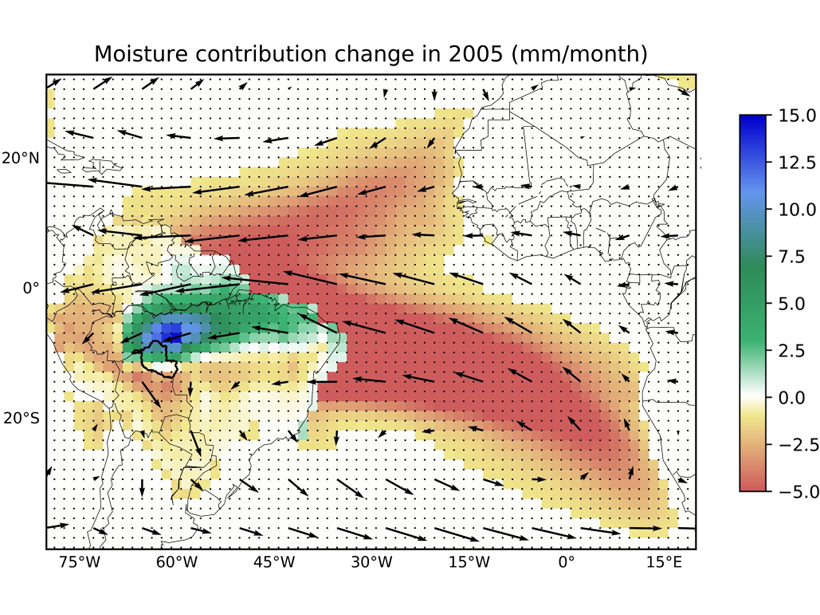Source: Geophysical Research Letters
Oceanic drivers, including warmer-than-normal sea surface in the Tropical Eastern Pacific and Northern Atlantic, are the primary causes for droughts in the Amazon basin. However, land surface evapotranspiration contributes a significant fraction of moisture for precipitation, which may modify the drought severity.
Using an Eulerian moisture tracking model driven by meteorological variables from reanalysis data, Mu et al. [2021] quantified the moisture contribution from different land covers and oceanic areas to rainfall over an agricultural region in the Brazilian Amazon (Rondonia) during 1981-2018, and assessed how the oceanic and terrestrial moisture supplies changed during severe drought events in 2005, 2010, and 2015.
They found that based on the long-term average during 1981-2018, forests, non-forested land, and the Atlantic Ocean respectively contributed 47.9%, 5.6%, and 46.5% of the moisture that fell as rainfall in Rondonia. During the severe meteorological droughts, moisture supply from non-forest land and oceanic sources dropped significantly, while upwind forests mitigated drought severity in Rondonia by maintaining a relatively stable evapotranspiration and moisture supply. Non-forested (pasture) land is more sensitive to drought due to its less dense canopy and shallower roots.
Since a large fraction of the forest moisture source is located in unprotected areas, deforestation of both natural and anthropogenic origins could threaten the terrestrial moisture source and exacerbate rainfall reduction during droughts, increasing the drought susceptibility of the regional agriculture and ecosystems.
Citation: Mu, Y., Biggs, T. W., & De Sales, F. [2021]. Forests mitigate drought in an agricultural region of the Brazilian Amazon: Atmospheric moisture tracking to identify critical source areas. Geophysical Research Letters, 48, e2020GL091380. https://doi.org/10.1029/2020GL091380
―Guiling Wang, Associate Editor, Geophysical Research Letters
Text © 2021. The authors. CC BY-NC-ND 3.0
Except where otherwise noted, images are subject to copyright. Any reuse without express permission from the copyright owner is prohibited.

